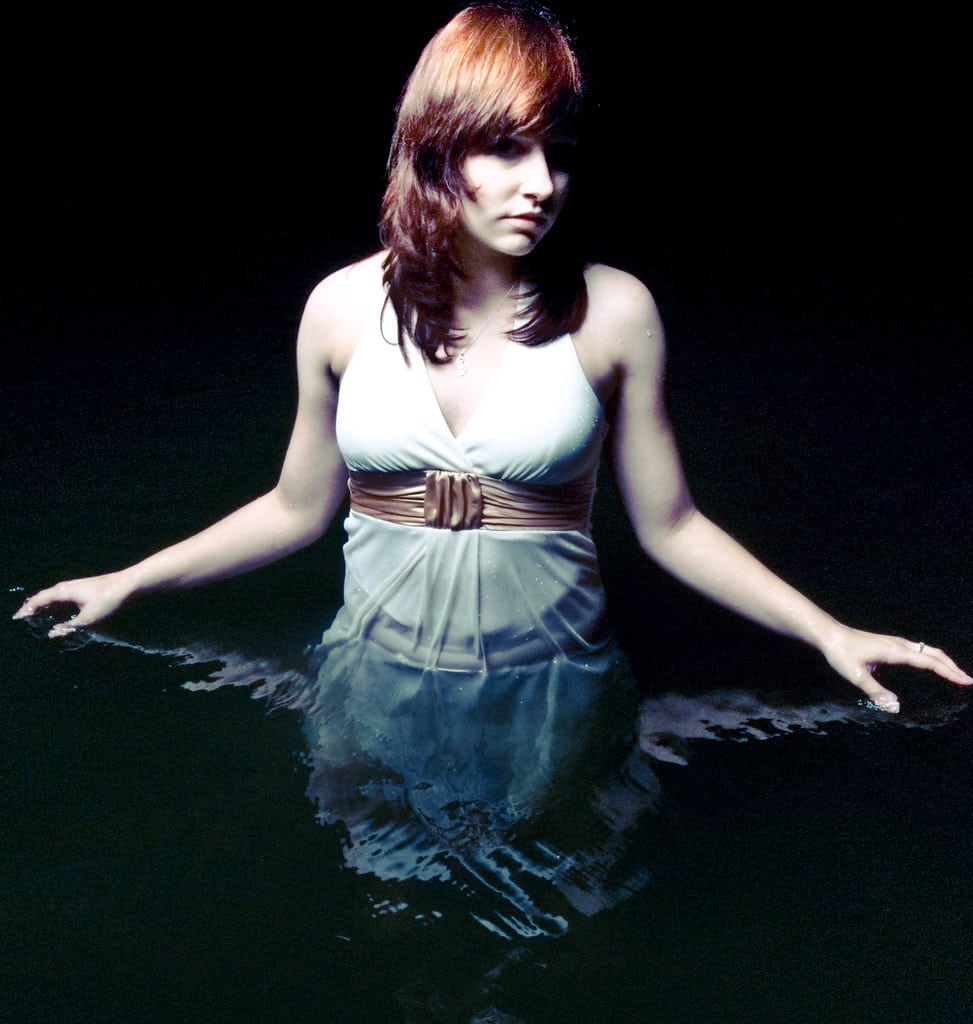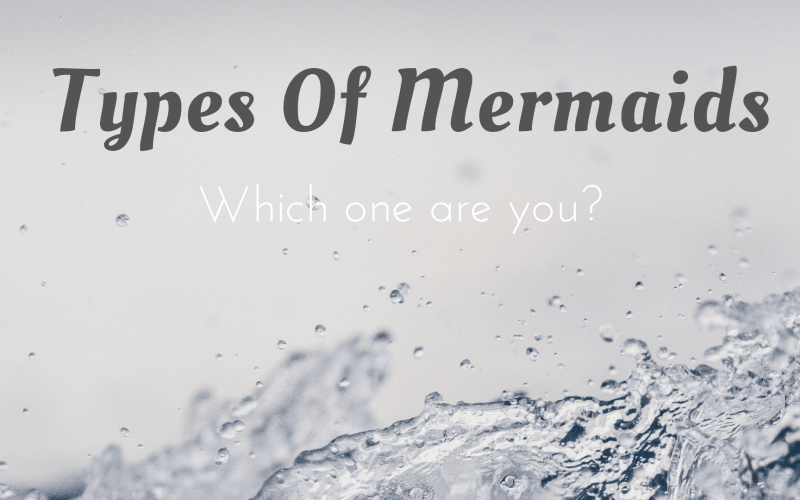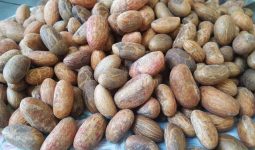All types of mermaids are unique in their way. Mermaids have existed from the beginning of time.
Fairytales, folklore, art, and real-life events have all contributed to human history, but they haven’t always been known for the same things.
Some were seen as omens of evil and seduction, while others were regarded as good fortune or fertility symbols.
1. Freshwater Mermaid
Merrows are based on Irish legend; thus, the highest chances of becoming merrows will be in the vicinity of Ireland, although they will operate regularly and successfully elsewhere.
They have long green hair and a red cap, according to legend. It is the red cap that distinguishes them as mermaids.
If they lose this cap, they turn to human form until they regain it. At this point, they return to the water, sometimes abandoning entire families in the process.
Many people are perplexed by these creatures. Sirens first appeared in Greek mythology as Persephone’s servants when she left.
Demeter (Persephone’s mother, the agricultural goddess) dispatched them to find her by calling to her with their lovely voices.
They were characterized as wicked, which has remained true to this day.
2. Deep-sea Mermaid
There’s no way to know, but there’s so much coast, and many mermaids lived there before they switched to sea.
It’s widely assumed that Open-Ocean mermaids are the most numerous sub-species. Their food varies depending on their location, and they nearly usually move and hunt in pods of 30-50.
They have large flukes that let them swim great distances and a long blue, green, or light purple tail that helps them blend in.
Their tails exhibit countershading, with a darker backside to hide them from predators looking down and a brighter front to hide them from predators looking up.
These types of mermaids have a wide range of personalities; the majority are nice, but they are nervous and secretive around people.
They speak a variety of ancient languages. Since they migrate, they are also known as Traveler Mermaids.
3. Sirens

Sirens have a reputation for being naughty or even deadly to passing sailors worldwide.
They can summon a storm or fog, foresee death, read minds, and unleash devastation at will. They have the potential to be demi-polupite, which means they can talk and sing in clear tones.
Siren was originally spelled “Seirén,” which meant “tying or grabbing” about their alluring singing.
In Greek mythology, the Sirens were ladies with a human lower body and bird-like wings. However, they could not fly after losing their feathers in a singing contest with the Muses.
Depending on whose mythology you read, sirens either died or transformed into mermaids. Sirens are bitter losers, so they may vent their frustrations on people.
4. Freshwater Mermaid
These types of mermaids don’t have fancy names like ‘Open Ocean’ since their habitat is very straightforward: lakes, ponds, streams, and rivers, predominantly lakes.
Freshwater mermaids are said to have a more complex civilization than saltwater mermaids, and they dwell in pods of 30-50.
They’re also friendlier than the majority of saltwater. To fit in with the murky water, they have a greenish color to their skin.
These types of mermaids have big flukes on occasion, but not always. It depends on whatever body of water they live in. Mermaids from Lake Michigan have large flukes, but mermaids from a little lake in Kansas have small flukes.
To fit in, almost every mermaid has a seaweed-green tail, but a few have blue tails.
Freshwater mermaids are the most friendly and approachable and befriend people the most. Depending on how muddy or transparent the water is, they may or may not exhibit countershading.
They eat a variety of foods and can choose to be carnivores, herbivores, or omnivores.
5. Naiades
Naiades may be found in various freshwater environments, including rivers, springs, wells, and fountains. They are mostly good and loving spirits safeguarding humans and the water they protect.
These freshwater springs are often the primary life-giving current on which adjacent civilizations are constructed.
Regular offerings will be offered to keep the Naiade happy, ensuring the waters are always blessed.
Swimming in a protected area allows you to absorb part of a Naiade’s magical powers. These waters have a long history of curing illnesses, inspiring poets, and bringing fertility to women and crops.
They are well-known for their beauty, which includes flowing long hair and the fact that they frequently go around naked, causing both men and gods to fall in love with them.
She can cause sudden floods or droughts on her enemies. If she gets agitated, she might affect the quality of the water, making it unhealthy to drink.
As long as their body of water remains strong, Naiades can live. If the water supply runs out, their strength dwindles, and they may die.
6. Ceasg
A Ceasg (pronounced “kee-ask”) is referred to as “maid of the waves” with a salmon tail-like bottom half.
These types of mermaids can be both harmful and lucky. If you catch her, she’ll give you three wishes.
If the kidnapped mermaids and sailors discover true love, she will convert into a human and walk on land, bestowing good fortune on her spouse for the rest of his life.
Some Scottish lineages even claimed to be derived from a human-mermaid coupling. The Ceasg may become eternal by encasing their soul in an item, such as a shell, and concealing it from humans.
7. Oceanids
An Oceanid is a water nymph that lives in the ocean’s deepest depths. Oceanid mermaids outnumber all other mermaid species.
Important water Goddesses include Metis, Zeus’ first wife, and Athena, whom he later impregnated.
Amphitrite and Doris are two more notable Oceanid Demigods. Their primary function is to guard the deep waters and to act as the gods’ spouses and lovers.
They watch over their children, who grow up to be gods. Many sailors devote prayers and sacrifices to the Oceanids out of compassion to protect them from terrible sea storms.
8. Selkies
Selkies may be found in both the British Isles and Iceland. They differ from Merrow and Ceasgs in that they are not cold-blooded.
Selkies may change shape from a seal-like creature to a person who can walk on land. These Selkies shed their seal-like skin to become human, concealing them so they may re-suit and return home when they’re done on land.
If these skins are discovered, the women are compelled to remain on land, are bound to the person who owns their seal suit, and live as faithful wives.
Unfortunately, Selkies have an insatiable desire for the sea; therefore, if she discovers the skin, she will put it back on and run to the sea, never looking back.
9. Atargatis
The oldest mermaid legend is that of Atargatis. She is the moon, water, and femininity goddess in Assyria. 3000 to 4000 years ago, she was adored.
Atargatis was represented as a mermaid, and her story is one of the oldest mermaid tales. Her tale goes that following the death of her mortal lover, she drowned herself in the sea in grief after giving birth to his kid on the beach. The gods chose to save her life by transforming her into a mermaid.
10. Mami Wata
Mami Wata is a Japanese word that means “mother of water.” She is an African water deity frequently shown as having mermaid-like features, such as a fish or snake tail. She also claims to have a human appearance.
11. Yemaya
Also known as Yemoja, Yemaya is a sea goddess from Africa. In Santera, an Afro-Caribbean religion, she is commonly represented as a mermaid, the Ocean Mother Goddess. She is now revered all around the world.
12. Sabrina
Sabrina is a nymph of the Severn River, according to British tradition. According to legend, she was the daughter of King Locrinus, who divorced his wife Gwendolen and fathered Sabrina with another woman.
Gwendolen drowned Sabrina and her mother in the Severn River, and as a result, she became a river nymph and is also regarded as a deity.








